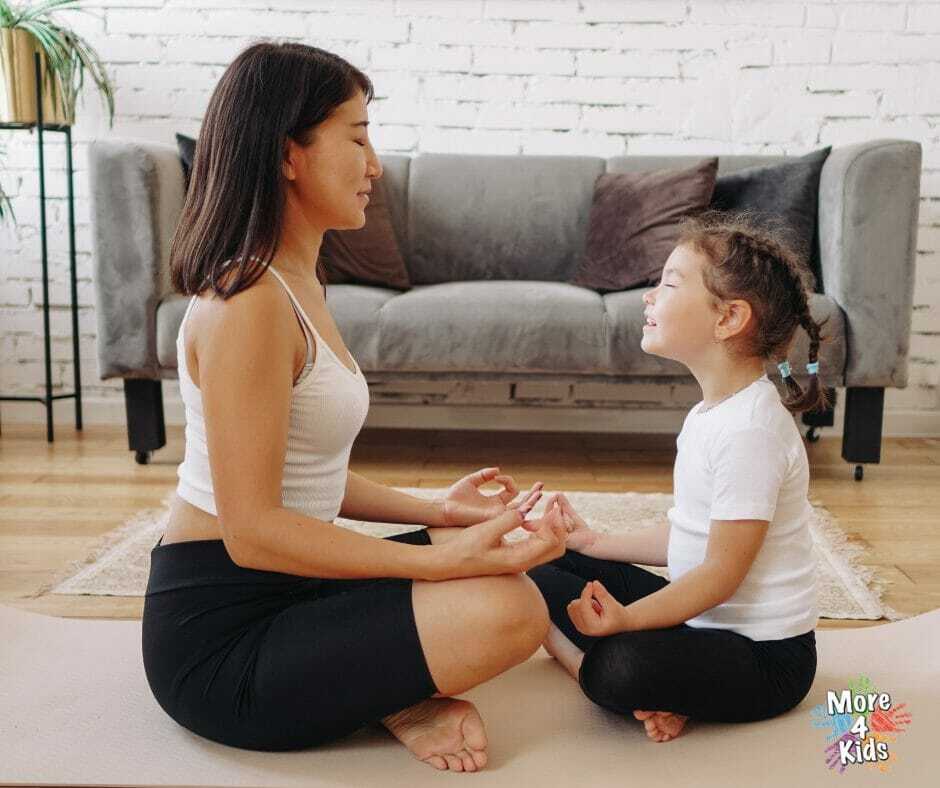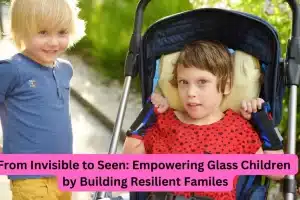As parents, we all want what’s best for our children – including their mental health and wellbeing. We know all too well how stressful life can get and it’s really not that different for kids. They face plenty of stressful situations and anxieties as they navigate life. And just as long-term stress can negatively affect adults, it can also have a negative effect on a child’s development, social life, and overall happiness.
Fortunately, there are powerful mindfulness techniques for kids that can help children manage stressful situations and reduce anxiety levels. In this article, we’ll explore 7 simple yet effective mindfulness techniques that parents can use to help their children cope with stress and reduce anxiety. We’ll also discuss the benefits of using mindful exercises for kids, as well as tips on how to teach young children mindfulness practices for dealing with emotions.
The Benefits of Mindful Exercises for Kids
Table of Contents
The Child Mind Institute lists some of the numerous benefits of mindful exercises for kid, including improved concentration and focus, stress reduction, and relaxation. Mindfulness can help children become more aware of their emotions and feelings so that they can better manage them. It also helps kids learn to be mindful of their surroundings and environment in order to stay grounded when experiencing anxious thoughts or stressful situations.
In addition, mindfulness activities can help children become more patient when dealing with difficult tasks and better regulate their emotions. All of these benefits can ultimately lead to greater mental health, wellbeing, and satisfaction.
7 Simple Yet Effective Mindfulness Techniques for Kids
1. Belly Breathing
One technique for helping your child relax and calm down is to have them lie down on a comfortable surface, such as a bed or a yoga mat, and guide them through deep breathing exercises. To do this, ask your child to place one hand on their stomach and take slow, steady breaths through their nose.
As they inhale, encourage them to focus on expanding their belly and feeling their hand rise. Then, as they exhale, ask them to contract their belly and feel their hand lower. Repeat this process several times, allowing your child to fully engage in the breathing exercise and find a natural rhythm.
As they continue to breathe, remind your child to focus on the physical sensations of their body and let go of any distracting thoughts. Encourage them to relax their muscles and sink deeper into a state of calm and relaxation.
2. Guided Visualization
Guided visualizations are a great way to help your child relax and bring them into the present moment. Have your child close their eyes while you lead them on a guided journey to a calming environment such as an imaginary beach or meadow. Ask them to describe what they see, smell, and feel as they explore this safe space. This exercise can provide much needed stress relief, while also teaching your child valuable tools for managing anxiety and connecting with their inner self.
3. Progressive Muscle Relaxation
Progressive Muscle Relaxation (PMR) is a relaxation technique that involves tensing and relaxing each muscle group in the body in a specific order, from head to toe. Start by finding a quiet and comfortable place to sit or lie down. Have them close their eyes and take some deep breaths.
Instruct them to focus on the forehead and scalp, tightening the muscles by scrunching up their forehead. Hold for a few seconds, then release and let the relaxation spread throughout that area.
Continue sequentially through all muscle groups in the body — face, neck, chest and back, arms and hands, stomach and buttocks, legs, and feet — having them tense each one before releasing the tension completely.
Finally spend some time just enjoying the relaxation state in silence. Prompts such as visualizing a peaceful scene or repeating a calming phrase can further enhance the experience.
4. Focused Attention Exercise
To do a Focused Attention Exercise with your child, pick one item in the room and ask them to direct their attention onto it. Have them observe the details of the object and its features. Then, encourage them to pay close attention over the next few minutes, noticing any changes that occur during that time. This exercise helps to shift focus away from anxious thoughts and to better manage stress.
5. Walking Meditation
For a Walking Meditation with your child, find a peaceful outdoor space. Then, have them take slow, mindful steps while paying attention to their body’s movements. Encourage them to focus on their breathing and use each step to ground themselves in the present moment. This exercise helps them to gain insight into their thought patterns and physical sensations while also releasing stress and tension.
6. Gratitude Practice
A Gratitude Practice is a great way to teach your child the power of positive thinking and appreciation. Have your child think of something they are grateful for, or have them make a list of all the things they appreciate in their life. This exercise helps foster feelings of contentment and joy while also reducing stress and anxiety. Additionally, your child will learn the importance of recognizing their blessings in life.
7. Yoga and Mindful Movement
To do a Yoga and Mindful Movement session with your child, teach them basic yoga poses that can help ground the body and mind. Have them focus on their breath and movements as they practice, helping to create a space for self-reflection and introspection. This exercise can help to alleviate stress and anxiety, while also teaching your child valuable mindful practices.
Tips on How to Teach Young Children Mindfulness Practices for Dealing with Emotions
- Make it Fun: Incorporate fun activities and games into mindfulness exercises so that your children are more likely to engage and stay focused.
- Use Visual Aids: Create visual aids such as charts and diagrams to help explain mindfulness concepts in an easy-to-understand way.
- Lead by Example: Demonstrate how to practice mindfulness and use it in everyday life so that your children can learn by example.
- Talk About Feelings: Have conversations with your children about their emotions and feelings and how mindfulness can help them manage them.
- Make Time for Mindfulness: Set aside a specific time each day to practice mindfulness with your children so that it becomes part of their routine.
- Praise Efforts: Give positive reinforcement when your children try to incorporate mindfulness into their lives, even if they are not successful. This will encourage them to keep trying and build their mindfulness skills.
Conclusion
In summary, mindfulness can be a powerful tool for helping children manage their emotions and develop mental health and wellness. Mindful practices are simple to learn, but it may take some time and effort before children start to reap the full benefits. Go ahead and make the effort to incorporate mindful exercises into your child’s life in creative ways that are meaningful for them. With consistency, patience, and support, children can learn to use mindfulness activities to navigate their emotions more healthfully and successfully.
















Add Comment